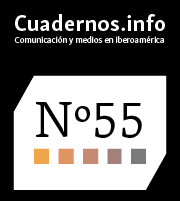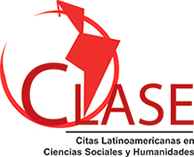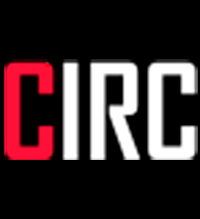Performatividad de las identidades de género en moda. Impacto de los estereotipos en Vogue y GQ
DOI:
https://doi.org/10.7764/cdi.55.52475Palabras clave:
moda, inclusividad, género, masculinidad, feminidad, estereotipos, queer, revistas de modaResumen
El objetivo de esta investigación es estudiar la diversidad, inclusión y los estereotipos en las revistas de modas internacionales, destinadas al público femenino o masculino, analizando las representaciones y el discurso derivado de sus publicaciones. Se trata de un análisis que pretende descubrir los estereotipos y las ambigüedades de los cambios sociales actuales. En una primera fase (F1), aplicamos una metodología de análisis de contenido mixto sobre las imágenes de portada (n1=120) difundidas en 2020 a través de las cuentas de Instagram de Vogue y GQ, en el marco de Estados Unidos y de Europa. Posteriormente, (F2) diseñamos un panel de expertos (n2=14) en el que participaron diseñadores con marca propia, miembros de equipos creativos de firmas internacionales y directores de agencias de modelos para debatir los resultados obtenidos en la primera fase. Un avance de los resultados constata, por un lado, que los estereotipos de belleza continúan copando las portadas de las revistas de moda, aunque se detecta cierta apertura hacia la inclusividad y la diversidad, especialmente en las publicaciones femeninas; las revistas masculinas siguen mostrando una imagen de hombre sujeta al canon clásico, pero con tendencia al cambio.
Descargas
Citas
Åkestam, N., Rosengren, S., & Dahlen, M. (2017). Think about it – can portrayals of homosexuality in advertising prime consumer-perceived social connectedness and empathy? European Journal of Marketing, 51(1), 82-98. https://doi.org/10.1108/EJM-11-2015-0765
Akdemir, N. (2018). Deconstruction of Gender Stereotypes Through Fashion. European Journal of Social Science Education and Research, 5(2), 259-264. https://doi.org/10.26417/ejser.v5i2.p185-190
Antoniou, A. & Akrivos, D. (2020). Gender portrayals in advertising: stereotypes, inclusive marketing and regulation. Journal of Media Law, 12(1), 78-115. https://doi.org/10.1080/17577632.2020.1783125
Barrios, M., Guilera, G., Nuño, L. & Gómez-Benito, J. (2021). Consensus in the delphi method: What makes a decision change? Technological Forecasting and Social Change, 163, 120484. https://doi.org/10.1016/j.techfore.2020.120484
Baxter, S. M., Kulczynski, A., & Ilicic, J. (2016). Ads aimed at dads: Exploring consumers’ reactions towards advertising that conforms and challenges traditional gender role ideologies. International Journal of Advertising, 35(6), 970-982. https://doi.org/10.1080/02650487.2015.1077605
Boselli, M. (2012). Fashion and anorexia. In A. Michelini (Ed.), Food nutrition agriculture: the challenges of the new millennium (pp. 169-173). L’Erma di Bretschneider.
Bryman, A. (2016). Social Research Methods. Oxford University Press. Coulter, N. & Moruzi, K. (2022). Woke Girls: From the girl’s realm to Teen Vogue. Feminist Media Studies, 22(4), 765-779. https://doi.org/10.1080/14680777.2020.1736119
Cristófol Rodríguez, C., Cabezuelo Lorenzo, F. & Paniagua Rojano, F. J. (2017). La adaptación de la revista VOGUE al nuevo contexto digital del periodismo de moda (VOGUE magazine adaptation to the new digital ontexto f fashion journalism). Doxa Comunicación, (24), 55-75. https://revistascientificas.uspceu.com/doxacomunicacion/article/view/715
de Beauvoir, S. (1949). Le Deuxième Sexe (The second sex). Gallimard.
de Freitas C., Jordan H., Hughes E. K. (2017). Body image diversity in the media. Health Promotion. Journal of Australia, 29(3), 251-256. https://doi.org/10.1002/hpja.21
Díaz-Soloaga, P., Quintas-Froufe, N. & Muñiz, C. (2010). Cuerpos mediáticos versus cuerpos reales. Un estudio de la representación del cuerpo femenino en la publicidad de marcas de moda en España (Media bodies versus real bodies. A study of the representation of the female body in the advertising of fashion brands in Spain). Icono 14, Revista de comunicación y tecnologías emergentes, 8(3), 244-256. https://doi.org/https://doi.org/10.7195/ri14.v8i3.237
Díaz-Soloaga, P. & Muñiz-Muriel, C. (2011). La publicidad de moda de lujo: efectos en la autopercepción de mujeres españolas (Luxury fashion advertising: effects on the selfperception of Spanish women). Indumenta: Revista del Museo del Traje, (2), 106-122. https://www.libreria.culturaydeporte.gob.es/libro/indumenta-revista-del-museo-deltraje-02-2011_1269/
Eisend, M. (2016). Comment: Advertising, Communication, and Brands. Journal of Advertising, 45(3), 353-355. https://doi.org/10.1080/00913367.2016.1187579
Eisend, M. (2019). Gender Roles. Journal of Advertising, 48(1), 72-80. https://doi.org/10.1080/00913367.2019.1566103
Eisend, M. (2022). Older People in Advertising. Journal of Advertising, 51(3), 308-322. https://doi.org/10.1080/00913367.2022.2027300
Entwistle, J. (2009). The Aesthetic Economy of Fashion: Markets and Value in Clothing and Modelling. Berg.
Entwistle, J. & Slater, D. (2012). Models as Brands: Critical Thinking about Bodies and Images. In J. Entwistle J & E. Wissinger (Eds.), Fashioning Models: Image, Text and Industry (pp. 15-33). Berg.
Finch, H. & Lewis, J. (2003). Focus groups.. In J. Ritchie & J. Lewis (Eds.), Qualitative Research Practice: A guide for Social Science Students and Researchers (pp. 170-198). SAGE.
Foucault, P. (2014). Sobre el Estado. Cursos en el Collège de France 1989-1992 (About the State. Courses at the Collège de France 1989-1992). Anagrama
Flick, U. (2004). Introducción a la metodología cualitativa (Introduction to qualitative methodology). Ediciones Morata.
Franklin, B., Hamer, M., Hanna, M., Kinsey, M. & Richardson, J. (2005). Key Concepts in Journalism Studies. SAGE. https://doi.org/10.4135/9781446215821
Gideon, L. (2012). Handbook of Survey Methodology for the Social Sciences. Springer.
Gill, R. & Kanai, A. (2019). Affirmative Advertising and the Mediated Feeling Rules of Neoliberalism. In M. Meyers (Ed.), Neoliberalism and The Media (pp. 131-146). Routledge. https://doi.org/10.4324/9781315106045-8
Griffin, G. (2017). Dictionary of Gender Studies. Oxford University Press.
Groeneveld, E. (2020). Gender in Magazines. In M. Sternadori & T. Holmes (Eds.), The Handbook of Magazine Studies (pp. 214-225). https://doi.org/10.1002/9781119168102.ch16
Jenkins, J. & Tandoc Jr, E. C. (2017). The power of the cover: Symbolic contests around the Boston bombing suspect’s Rolling Stone cover. Journalism, 18(3), 281-297. https://doi.org/10.1177/1464884915614240
Karaminas, V., Geczy, A., & Church Gibson, P. (Eds.). (2022). Fashionable Masculinities: Queers, Pimp Daddies, and Lumbersexuals. Rutgers University Press.
Kitch, C. (2015). Theory and Methods of Analysis. Models for Understanding Magazines. In D. Abrahamson & M. R. Prior-Miller (Eds.), The Routledge Handbook of Magazine Research (pp.9-21). Routledge. https://doi.org/10.4324/9781315722283
Krijnen, T. & Van Bauwel, S. (2021). Gender and Media. Representing, Producing, Consuming. Routledge.
Krippendorff, K. (2004). Análisis de contenido: Una introducción a su metodología (Content Analysis: An Introduction to its Methodology). SAGE.
Linstone, H. A. & Turoff, M. (Eds.). (1975). The Delphi Method. Techniques and Applications. Addison-Wesley.
Lipovetsky, G. (1999). La tercera mujer (Third Woman). Anagrama.
Lynge-Jorlén, A. (2017). Niche Fashion Magazines. Changing the Shape of Fashion. I. B. Tauris. Mauriès, P. (2017). Androgynous: Fashion + Gender. Thames & Hudson.
Mazahir, I., Khan, S., Yaseen, S., & Emaduddin, S. M. (2020). Gender stereotyping in fashion advertising: a perceptual analysis of male consumers from Pakistan. Media Education, 60(1), 129-143.
Mears, A. (2011). Pricing Beauty: The Making of a Fashion Model. University of California Press.
Morris, P. K. (2014). Comparing portrayals of beauty in outdoor advertisements across six cultures: Bulgaria, Hong Kong, Japan, Poland, South Korea, and Turkey. Asian Journal of Communication, 24(3), 242-261. https://doi.org/10.1080/01292986.2014.885535
Morris, P. K. & Nichols, K. (2013). Conceptualizing Beauty: A Content Analysis of US and French Women's Fashion Magazine Advertisements. Online Journal of Communication and Media Technologies, 3(1), 49-74. https://doi.org/10.29333/ojcmt/2410
Nguyen, T. D. (2021). Gender Stereotypes: The Profiling of Women in Marketing. In Exploring Gender at Work (pp. 123-137). Palgrave Macmillan.
Neuendorf, K. (2002). Content Analysis Guidebook. SAGE.
Pompper, D., Lee, S., & Lerner, S. (2009). Gauging Outcomes of 1960s Social Equality Movements: Nearly Four Decades of Gender & Ethnicity on the cover of the Rolling Stone Magazine. The Journal of Popular Culture, 42(2), 273–290. https://doi.org/10.1111/j.1540-5931.2009.00679.x
Read, G. L., van Driel, I. I., & Potter, R. F. (2018). Same-Sex Couples in Advertisements: An Investigation of the Role of Implicit Attitudes on Cognitive Processing and Evaluation. Journal of Advertising, 47(2), 182-197. https://doi.org/10.1080/00913367.2018.1452653
Sanz Marcos, P., Pérez Curiel, C., & Velasco Molpeceres, A. M. (2020). Hacia un cambio en el sector de moda y lujo. Del dominio del influencer a la marca: Gucci, Loewe y Margiela (Towards a change in the fashion and luxury sector. From the domain of the influencer to the brand: Gucci, Loewe and Margiela). Revista de Comunicación, 19(2), 263-284. https://doi.org/10.26441/rc19.2-2020-a15
Scalisse, V. (2021). Transgresión y glamour, las portadas de la moda. Un análisis de la pasarela/vidriera de papel (Transgression and glamor, the covers of fashion. An analysis of the catwalk/paper window). Cuadernos del Centro de Estudios en Diseño y Comunicación. Ensayos, (100), 181-194. https://doi.org/10.18682/cdc.vi100.3998
Simpson, M. (1994). Here Come the Mirror Men: Why the Future is Metrosexual. marksimpson.com. https://www.marksimpson.com/here-come-the-mirror-men/
Sixsmith, B. (2019, October 16). GQ is a holy text of woke capital. The Spectator. https://spectatorworld.com/life/gq-holy-text-woke-capital/
Spiker, T. (2015). The magazine Cover. The Craft of Identity and Impact. In D. Abrahamson & M. R. Prior-Miller (Eds.), The Routledge Handbook of Magazine Research (pp. 377-391). Routledge. https://doi.org/10.4324/9781315722283
Spinner, L., Cameron, L., & Tenenbaum, H. R. (2022). Gender Stereotypes in Young Children’s Magazines. Mass Communication and Society, 26(1), 147-170. https://doi.org/10.1080/15205436.2022.2052902
Treviños-Rodríguez, D. & Díaz-Soloaga, P. (2021). La imagen femenina en tiempos del #metoo: publicidad de moda, perfume y cosmética (Female image the time of #metoo: fashion, perfume, and cosmetics advertising). Profesional De La información, 30(2). https://doi.org/10.3145/epi.2021.mar.05
Varghese, N. & Kumar, N. (2020). Feminism in advertising: Irony or revolution? A critical review of femvertising. Feminist Media Studies, 22(2), 441-459. https://doi.org/10.1080/14680777.2020.1825510
Velasco Molpeceres, A. (2022). Historia de la moda en España. De la mantilla al bikini (History of fashion in Spain. From the mantilla to the bikini). Catarata.
Volonté, P. (2012). Social and Cultural Features of Fashion Design in Milan. Fashion Theory, 16(4), 399–431. https://doi.org/10.2752/175174112X13427906403723
Volonté, P. (2019). The thin ideal and the practice of fashion. Journal of Consumer Culture, 19(2), 252-270.
Wertsch, J. V. (2017). Mediated Action. In W. Bechtel & G. Graham (Eds.), A Companion to Cognitive Science, 518-525. Wiley Online Books. https://doi.org/10.1002/9781405164535.ch40
Wissinger, E. (2007). Modelling a Way of Life. Ephemera, 7(1), 250-269.
Descargas
Publicado
Cómo citar
Número
Sección
Licencia
Derechos de autor 2023 Concha Pérez-Curiel, Paloma Sanz-Marcos, Ana Velasco Molpeceres

Esta obra está bajo una licencia internacional Creative Commons Atribución-NoComercial-CompartirIgual 4.0.















